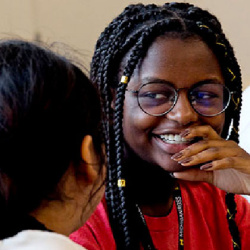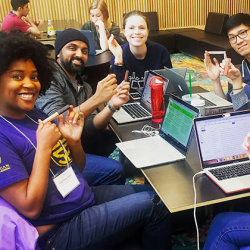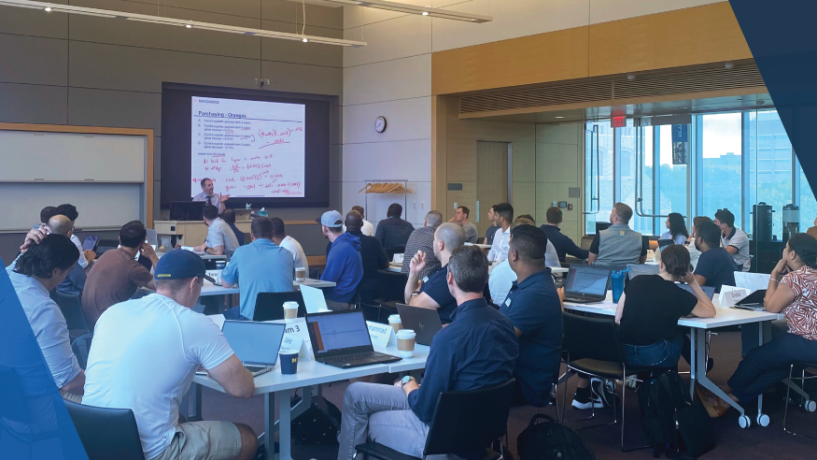A Noncomprehensive Guide to the OMBA Innovation Residency

Starting the Online MBA Program in January of 2023, I had yet to come to campus or have an opportunity to meet other students in the program in person. The Innovation Residency was my first residency, and I didn’t quite know what to expect. But, I quickly learned that I was in good company and that I was in for a great experience.
Coming Together, Making Connections
After already having been in a couple of classes or on projects with people, meeting them in person allowed me to connect with them beyond the typical, “My name is Stephen, and I live in Seattle.” Instead, it was more of, “Hey Mike, who is watching your Maine coon that walks in front of the camera every class?” Most importantly, the Ross School of Business culture was apparent from the start, and everyone was friendly and welcoming.
The time spent with the other students at the residency allowed for incredible opportunities to connect and network. Whether it was at breakfast on the first day, a networking event at Skeeps between the Part-Time and Full-Time MBA Programs, or even over a slice of pizza from Joe’s, I thoroughly enjoyed meeting fellow OMBA students in various stages of their MBA journey. There were quite a few of us attending our first residency, but there were also those who were crossing the last one off the list. Swapping stories and experiences from classes or learning more about what they did for work outside of the program really helped showcase the different perspectives of the class. I met folks in tech, manufacturing, the military, aerospace, and logistics. The various backgrounds allowed me to make connections in other industries that I could reach and learn more about in the future.
Getting to Work
In the residency, we didn’t get to pick our groups, but we did get to pick the topic for our project. Ironically the group that I was in was all engineers, with a majority of us having a manufacturing background. We learned that we all had similar pain points when working with standard operating procedures. We were able to pick a solution that could potentially address the “Standard Operating Procedure Problem At The Source,” which was our presentation title. The two and a half days flew by. Our group bonded and had fun building a low-fidelity prototype of our application and seeing our concept take shape. After our final pitch, we’re talking about potentially trying to see if we can make our concept a reality and maybe starting it as a business.
Applying What I’ve Learned
From a curriculum standpoint, it was engaging to learn about innovation as a process and work on a project as a group. It helped solidify the concepts better than trying to absorb a case study on innovation. It’s easy to read about innovation being iterative; it's another thing to have to take your prototype through those iterations. The tools we learned are easily translatable to jobs outside of class, and I'm excited to start applying what I've learned from the residency in my day-to-day life.








